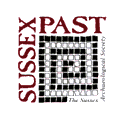Sussex Archaeological Collections: Relating to the history and antiquities of the counties of East and West Sussex
Sussex Archaeological Society, 2000. (updated 2022) https://doi.org/10.5284/1000334. How to cite using this DOI
Data copyright © Sussex Archaeological Society unless otherwise stated
This work is licensed under the ADS Terms of Use and Access.
Primary contact
Jaime
Kaminski
Sussex Archaeological Society
Barbican House
169 High Street
Lewes
BN8 1YE
Resource identifiers
- ADS Collection: 285
- DOI:https://doi.org/10.5284/1000334
- How to cite using this DOI
New animals, new landscapes and new worldviews
The Iron Age to Roman Transition at Fishbourne.
by MARTYN ALLEN & NAOMI SYKES
Anthropologists and cultural geographers have long accepted that animals play an important role in the creation of human cultures. However, such beliefs are yet to be embraced by archaeologists, who seldom give zooarchaeological data much consideration beyond the occasional economic or environmental reconstruction. In an attempt to highlight animal remains as a source of cultural information, this paper examines the evidence for the changing relationship between people and wild animals in Iron Age and Roman southern England. Special attention is given to 'exotic' species - in particular fallow deer, domestic fowl and the hare - whose management increased around AD 43. In Iron Age Britain the concept of wild game reserves was seemingly absent, but the post-Conquest appearance of new landscape features such as vivaria, leporaria and piscinae indicates a change in worldview from a situation where people seemingly negotiated with the 'wilderness' and 'wild things' to one where people felt they had the right or the responsibility to bring them to order. Using Fishbourne Roman Palace as a case study, we argue that wild and exotic animals represented far more than gastronomic treats or symbols of Roman identity, instead influencing the way in which people engaged with, traversed and experienced their surroundings.





